Efficient serum-free derivation of oligodendrocyte precursors from neural stem cell-enriched cultures
- PMID: 18403757
- PMCID: PMC4772902
- DOI: 10.1634/stemcells.2007-0205
Efficient serum-free derivation of oligodendrocyte precursors from neural stem cell-enriched cultures
Abstract
Oligodendrocytes derived in the laboratory from stem cells have been proposed as a treatment for acute and chronic injury to the central nervous system. Platelet-derived growth factor (PDGF) receptor alpha (PDGFRalpha) signaling is known to regulate oligodendrocyte precursor cell numbers both during development and adulthood. Here, we analyze the effects of PDGFRalpha signaling on central nervous system (CNS) stem cell-enriched cultures. We find that AC133 selection for CNS progenitors acutely isolated from the fetal cortex enriches for PDGF-AA-responsive cells. PDGF-AA treatment of fibroblast growth factor 2-expanded CNS stem cell-enriched cultures increases nestin(+) cell number, viability, proliferation, and glycolytic rate. We show that a brief exposure to PDGF-AA rapidly and efficiently permits the derivation of O4(+) oligodendrocyte-lineage cells from CNS stem cell-enriched cultures. The derivation of oligodendrocyte-lineage cells demonstrated here may support the effective use of stem cells in understanding fate choice mechanisms and the development of new therapies targeting this cell type.
Conflict of interest statement
The authors indicate no potential conflicts of interest.
Figures
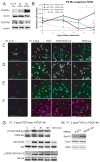
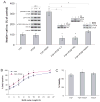
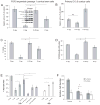
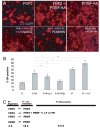
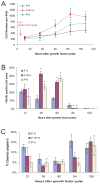
Similar articles
-
Immature neurons from CNS stem cells proliferate in response to platelet-derived growth factor.J Neurosci. 2001 May 15;21(10):3483-91. doi: 10.1523/JNEUROSCI.21-10-03483.2001. J Neurosci. 2001. PMID: 11331377 Free PMC article.
-
Developmental expression of fibroblast growth factor (FGF) receptors in neural stem cell progeny. Modulation of neuronal and glial lineages by basic FGF treatment.Neurol Res. 2001 Sep;23(6):612-21. doi: 10.1179/016164101101199090. Neurol Res. 2001. PMID: 11547930
-
Extracellular and intracellular regulation of oligodendrocyte development: roles of Sonic hedgehog and expression of E proteins.Glia. 2002 Oct;40(1):55-64. doi: 10.1002/glia.10114. Glia. 2002. PMID: 12237843
-
The remyelinating potential and in vitro differentiation of MOG-expressing oligodendrocyte precursors isolated from the adult rat CNS.Eur J Neurosci. 2004 Sep;20(6):1445-60. doi: 10.1111/j.1460-9568.2004.03606.x. Eur J Neurosci. 2004. PMID: 15355312
-
From neural stem cells to myelinating oligodendrocytes.Mol Cell Neurosci. 1999 Oct-Nov;14(4-5):287-300. doi: 10.1006/mcne.1999.0790. Mol Cell Neurosci. 1999. PMID: 10588385 Review.
Cited by
-
Receptor tyrosine kinase (RTK) signalling in the control of neural stem and progenitor cell (NSPC) development.Mol Neurobiol. 2014 Feb;49(1):440-71. doi: 10.1007/s12035-013-8532-5. Epub 2013 Aug 28. Mol Neurobiol. 2014. PMID: 23982746 Review.
-
Characterization and pharmacologic targeting of EZH2, a fetal retinal protein and epigenetic regulator, in human retinoblastoma.Lab Invest. 2015 Nov;95(11):1278-90. doi: 10.1038/labinvest.2015.104. Epub 2015 Aug 17. Lab Invest. 2015. PMID: 26280220 Free PMC article.
-
Progenitor-derived oligodendrocyte culture system from human fetal brain.J Vis Exp. 2012 Dec 20;(70):4274. doi: 10.3791/4274. J Vis Exp. 2012. PMID: 23288248 Free PMC article.
-
Human embryonic stem cell-derived oligodendrocytes: protocols and perspectives.Stem Cells Dev. 2013 Sep 15;22(18):2459-76. doi: 10.1089/scd.2012.0520. Epub 2013 Jun 12. Stem Cells Dev. 2013. PMID: 23621561 Free PMC article. Review.
-
Recent insights into PDGF-induced gliomagenesis.Brain Pathol. 2010 May;20(3):527-38. doi: 10.1111/j.1750-3639.2009.00335.x. Epub 2009 Sep 25. Brain Pathol. 2010. PMID: 19832839 Free PMC article. Review.
References
-
- McKay R. Stem cells in the central nervous system. Science. 1997 Apr 4;276(5309):66–71. - PubMed
-
- Gage FH. Mammalian neural stem cells. Science. 2000 Feb 25;287(5457):1433–1438. - PubMed
-
- Okabe S, Forsberg-Nilsson K, Spiro AC, Segal M, McKay RD. Development of neuronal precursor cells and functional postmitotic neurons from embryonic stem cells in vitro. Mech Dev. 1996 Sep;59(1):89–102. - PubMed
-
- Zhang SC, Wernig M, Duncan ID, Brustle O, Thomson JA. In vitro differentiation of transplantable neural precursors from human embryonic stem cells. Nat Biotechnol. 2001 Dec;19(12):1129–1133. - PubMed
Publication types
MeSH terms
Substances
Grants and funding
LinkOut - more resources
Full Text Sources
Other Literature Sources
Medical
Research Materials

